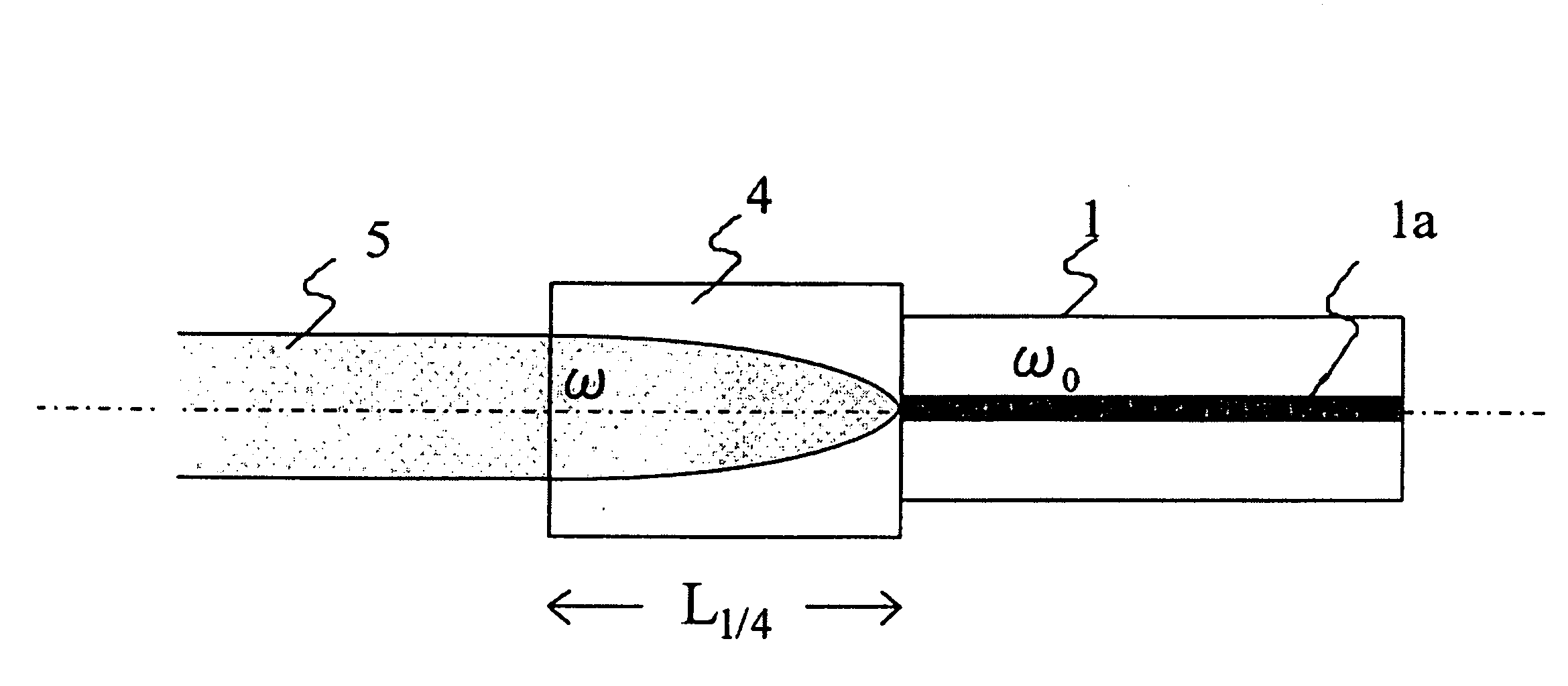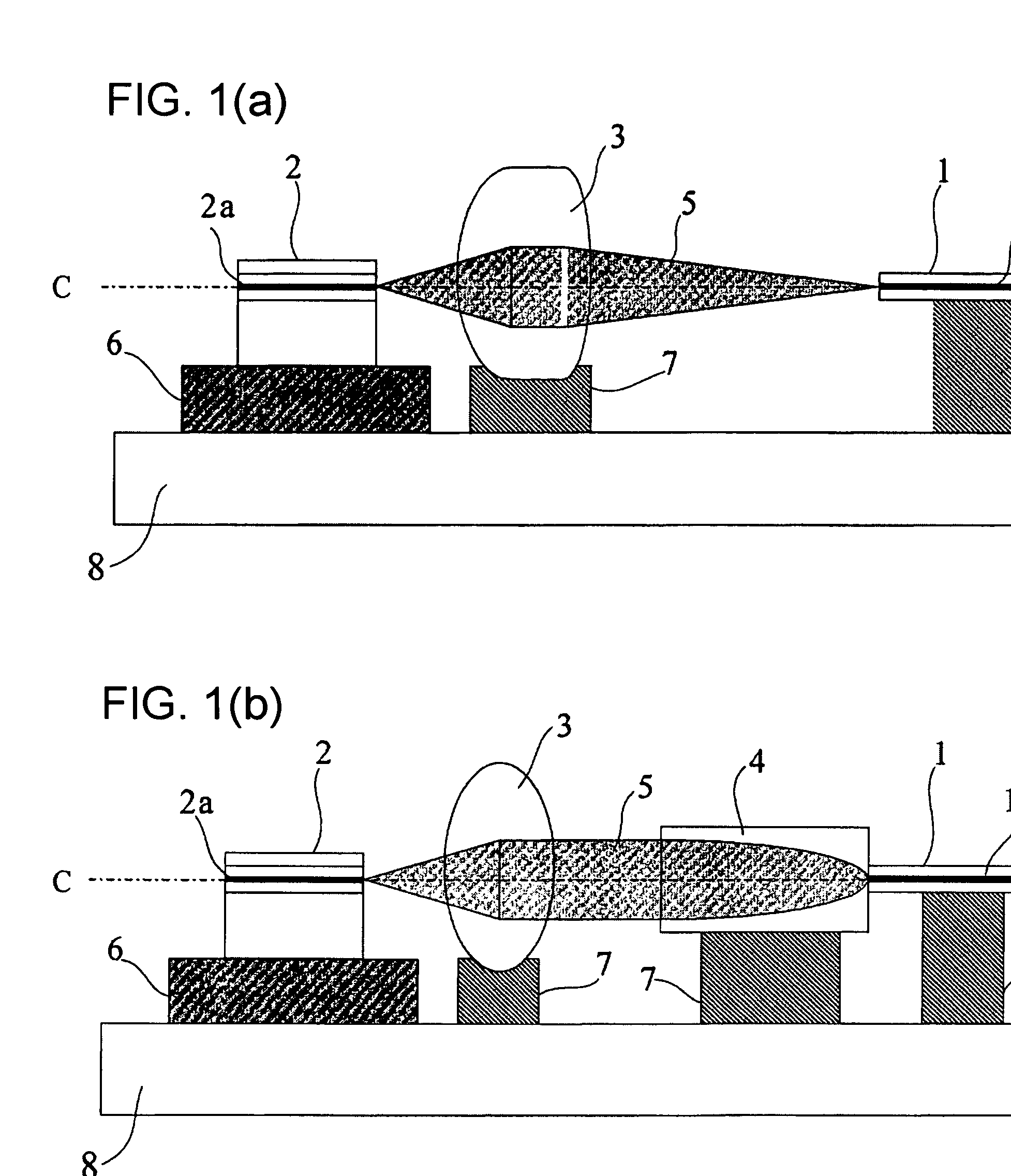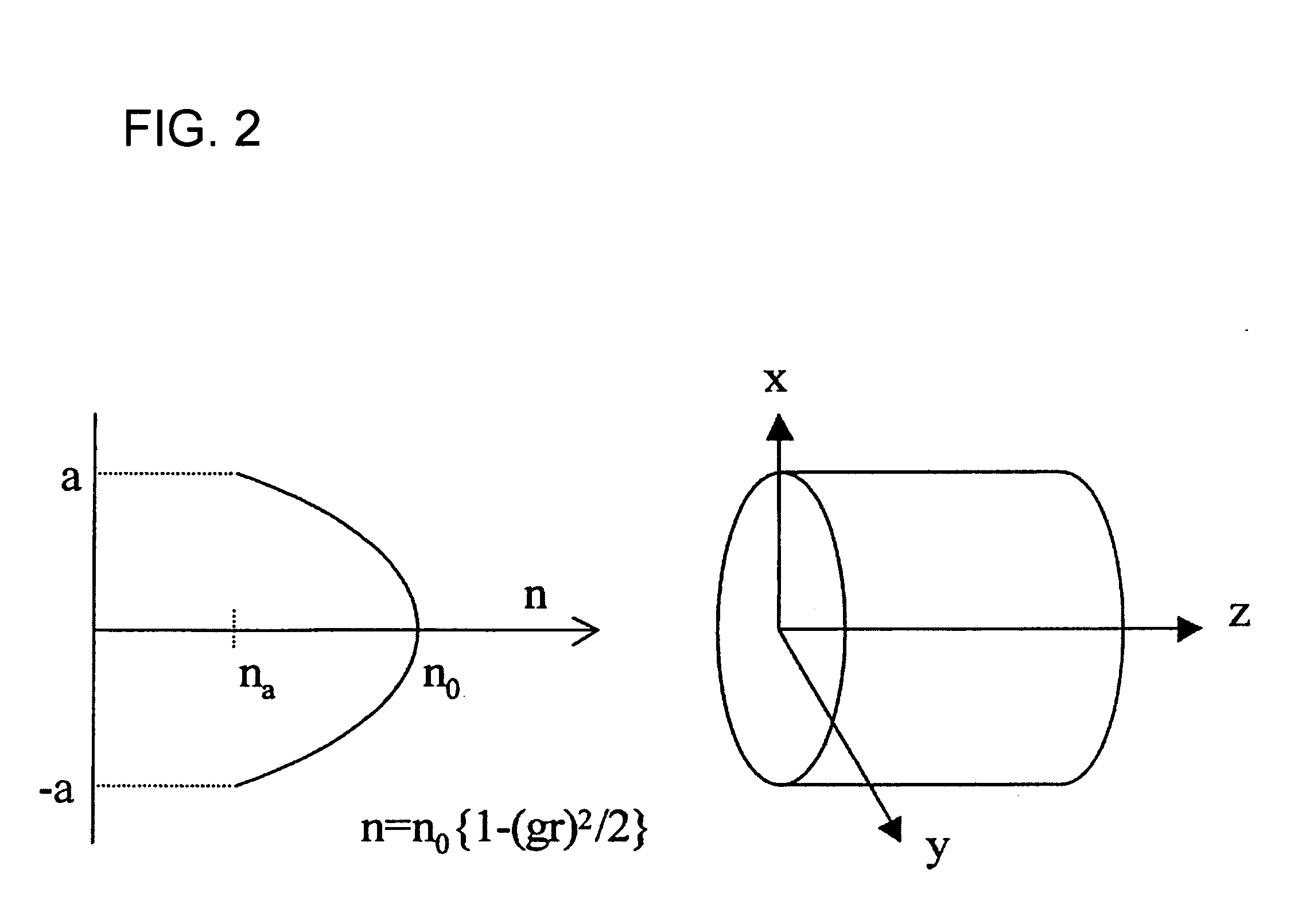Optical Fiber Coupling Part and Manufacturing Method Thereof
- Summary
- Abstract
- Description
- Claims
- Application Information
AI Technical Summary
Benefits of technology
Problems solved by technology
Method used
Image
Examples
example 1
[0041]9.2 ml of 2N hydrochloric acid was added to a mixture of 75.5 ml of a silicon tetramethoxide and 183.4 ml of isopropanol, and stirred for 30 min., then 30.8 ml of a titanium tetra-n-butoxide was added. Subsequently, 0.01 N ammonia water was added to obtain a wet gel. The wet gel was aged at 50° C. for two days, and soaked in 6N hydrochloric acid for two hours, providing a concentration distribution of titanium in the gel. Then the gel was soaked in methanol to rinse hydrochloric acid in the gel. The gel was soaked in 6N hydrochloric acid for 20 minutes for the second provision of the concentration distribution, then soaked in methanol to rinse hydrochloric acid as with the first step, and dried. Subsequently, the gel was soaked in 6N hydrochloric acid for 8 minutes for the third provision of the concentration distribution, then soaked in methanol to rinse hydrochloric acid as with the first step, and dried, resulting in a dry gel of 10 mm in diameter. The resulting dry gel was...
example 2
[0045]As in the case with Example 1, a prototype of the GRIN lens with NA (=0.5) which decreases in an approximately quadratic curve from the center to the periphery was obtained. The prototype was spun into an optical fiber of 166 μm in outside diameter while inserted into the electric furnace of the carbon heater at 0.04 mm / s to manufacture the GRIN lens-shaped optical fiber. The refractive index distribution of the optical fiber was determined again and resulted in a GRIN lens-shaped optical fiber with NA (=0.5) which decreases in an approximately quadratic curve from the center to the periphery, wherein the refractive index distribution constant g was 0.0042 (μm−1) when g was expressed by g=1.05 NA / n0a.
[0046]The manufactured GRIN lens-shaped optical fiber was spliced with one end of the single mode optical fiber of 0.09 in numerical aperture by fusion using the discharge fusion splicer, and then cut into the cycle length of ¼ of a zigzag cycle of a light propagated through the G...
PUM
| Property | Measurement | Unit |
|---|---|---|
| Distribution | aaaaa | aaaaa |
| Refractive index | aaaaa | aaaaa |
Abstract
Description
Claims
Application Information
 Login to View More
Login to View More - R&D
- Intellectual Property
- Life Sciences
- Materials
- Tech Scout
- Unparalleled Data Quality
- Higher Quality Content
- 60% Fewer Hallucinations
Browse by: Latest US Patents, China's latest patents, Technical Efficacy Thesaurus, Application Domain, Technology Topic, Popular Technical Reports.
© 2025 PatSnap. All rights reserved.Legal|Privacy policy|Modern Slavery Act Transparency Statement|Sitemap|About US| Contact US: help@patsnap.com



